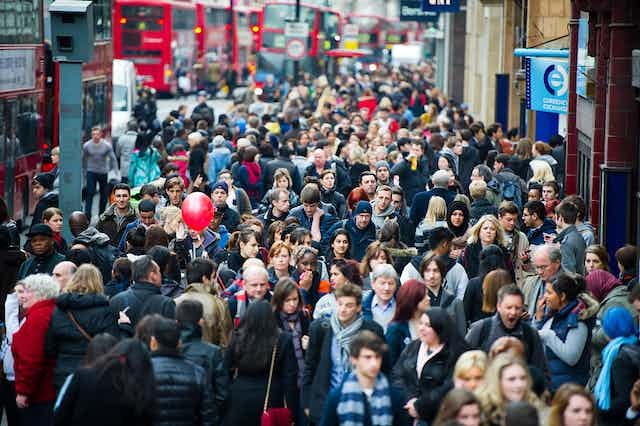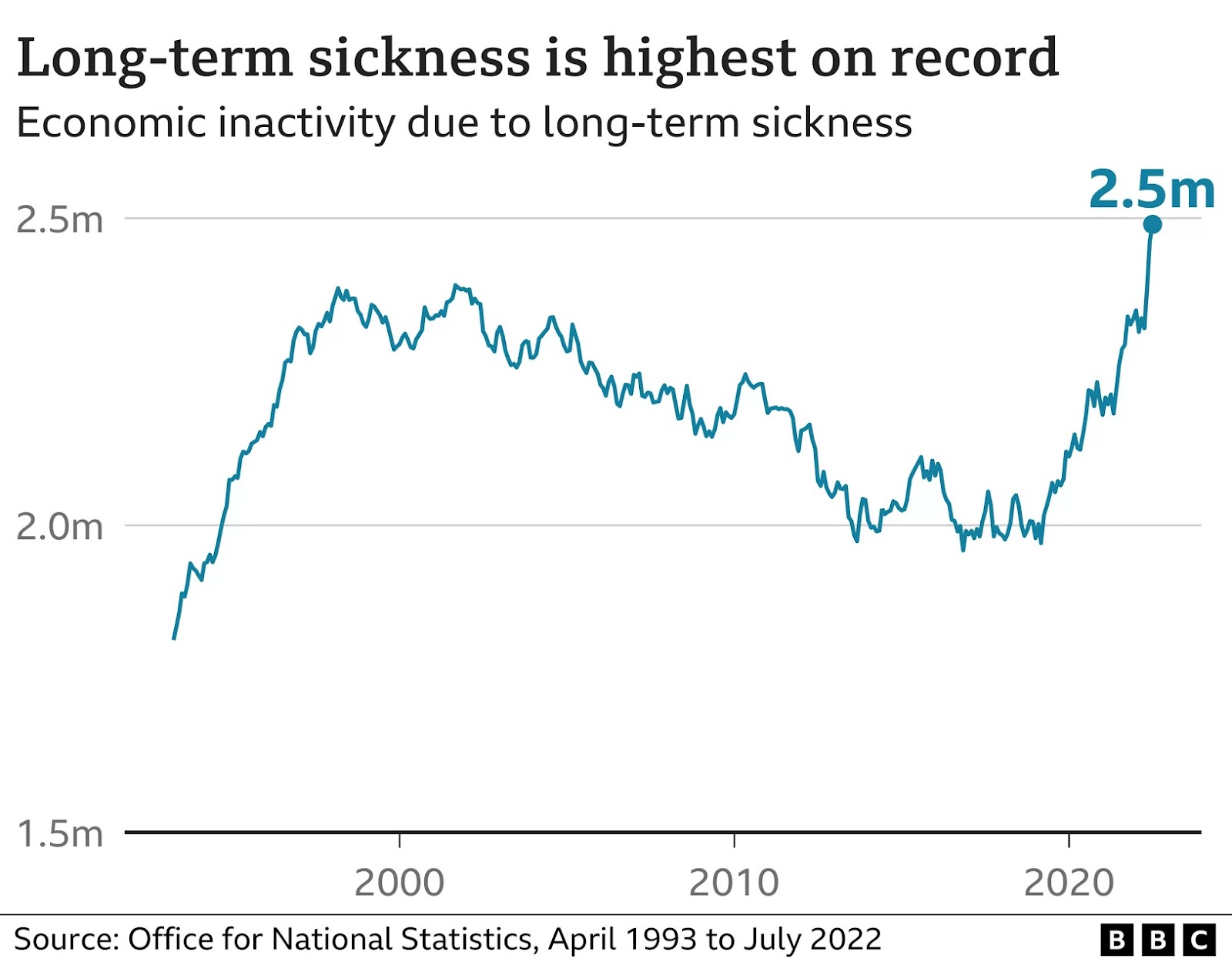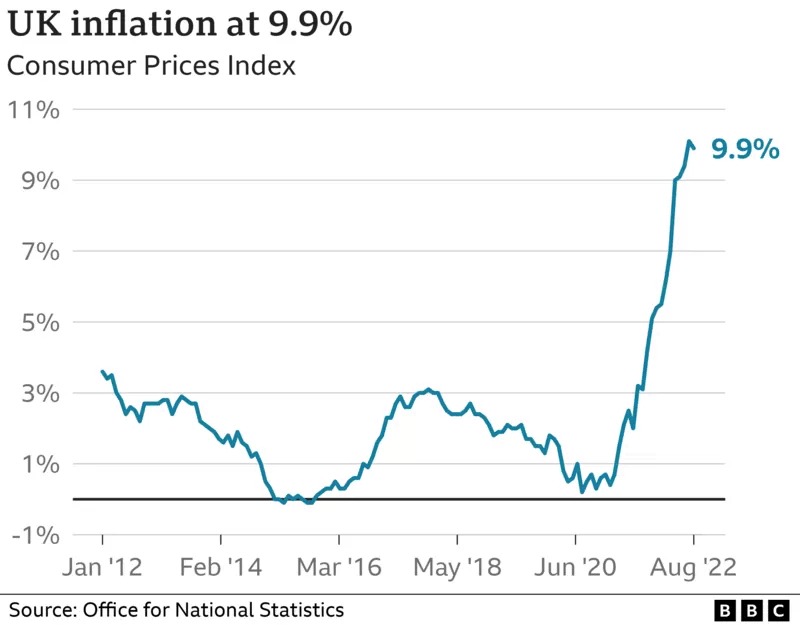According to the Office for National Statistics, the unemployment rate in the UK had decreased over the three months ending in August to 3.5% due to long-term illness hitting the records.

According to the most recent government statistics, a record number of people are opting not to look for employment because they are dealing with a long-term ailment.
The decline in the number of job applicants has contributed to reducing the unemployment rate to its lowest point in almost 50 years.
UK- Rising unemployment and high long-term illness pose a concern

The economic inactivity rate—the percentage of persons not working or looking for work—rose to 21.7 per cent, 0.6 points more than it had been in the preceding three months, as a result of record rates of long-term illness.
Throughout the three months leading up to August, the population of long-sick persons increased by about 170,000 to slightly under 2.5 million.
According to experts, the long Covid, deteriorating mental health, and the growing NHS waitlist, which is close to 7 million, are the main causes of the enormous increase in disease since the epidemic began.
In the three months ending in August, the unemployment rate decreased to 3.5%, in accordance with the Office for National Statistics (ONS).
Even while the level of available positions remains high and many businesses are having difficulty recruiting, the number of openings dropped once again.
The unemployment rate was expected to remain static at 3.6%, the level it reached in the previous quarter, according to economists.
It followed a surge to a joint long-term in the number of individuals classified as “economically inactive”—that is, not working or looking for work—due to long-term illness.
According to the statistics, since the Covid-19 pandemic began, 377,681 additional individuals have now become economically inactive due to long-term illness.
People aged 50 are mostly responsible for the 0.6 percentage point increase in economic activity to 21.7%.This revealed that over the period, both the unemployment rate and employment decreased.
To reach 75.5% for the quarter, the employment rate dropped by 0.3 percentage points. According to the ONS, the number of people employed in the UK increased by about 69,000 during August – September to reach 29.7 million.
David Freeman, the director of the labour market and household statistics, noted that the number of people who are neither employed nor seeking employment has increased over the previous few months.
“The unemployment rate continues to fall and is now at its lowest for almost 50 years.”
-David Freeman, ONS head of labour market and household statistics
According to the ONS, the economic inactivity rate, which gauges the percentage of persons between the ages of 16 and 64 who aren’t looking for work, rose to 21.7% from June to August. Nearly 2.5 million people are no longer working because they are suffering long-term illness, which is hitting a record level.
“However, the number of people neither working nor looking for work continues to rise, with those who say this is because they’re long-term sick reaching a record level. While the number of job vacancies remains high after its long period of rapid growth, it has now dropped back a little, with several employers telling us they’ve reduced recruitment due to a variety of economic pressures. However, because unemployment is also down, there continue to be more vacancies than unemployed people.”
-David Freeman, ONS head of labour market and household statistics
The ONS said that amid a slowdown in corporate investment, the expected number of vacancies in the period from July to September 2022 decreased by 46,000 every quarter to 1,246,000.
UK: Rising unemployment due to long-term illness and high costs of living

The revised data also demonstrated that wages had made a reasonable improvement, but it still lags far behind inflation.
From over 3 months spanning June to August, the average wage increased by 5.4% without accounting for bonuses.
However, it follows a month in which Consumer Price Index (CPI) inflation hit 9.9%, indicating the continued widening gap between British workers’ take-home income and the price of goods and services.
According to the ONS, the average regular pay rise was 6.2percent for the private industry against 2.2% for the public service, showing the widest pay difference between the two since the epidemic.
According to the ONS, after accounting for price increases, the value of normal pay decreased by 2.9percent in the 3 months leading up to August.
However, the pay squeeze persists as regular wage increases fall short of keeping up with the rising cost of living.

The growing price of food with fossil fuels is a major factor in the cost of living rising at almost its speediest rate in 40 years.
https://www.ons.gov.uk/economy/inflationandpriceindices/bulletins/consumerpriceinflation/august2022
According to the governor of the Bank of England, Russia’s distress is the main cause of UK inflation. Although prices have dropped from record highs, they are still projected to remain high due to the Ukraine conflict’s pressure on grain supply and costs.
The cost of living is rising significantly in other nations as well, with the world struggling to cope with soaring inflation. Increased energy prices, a lack of supplies of commodities and materials, and the effects of Covid are a few of the same causes.













